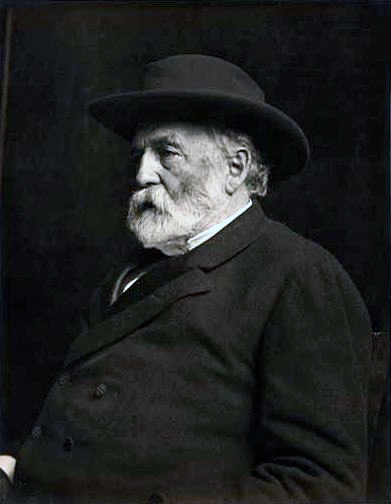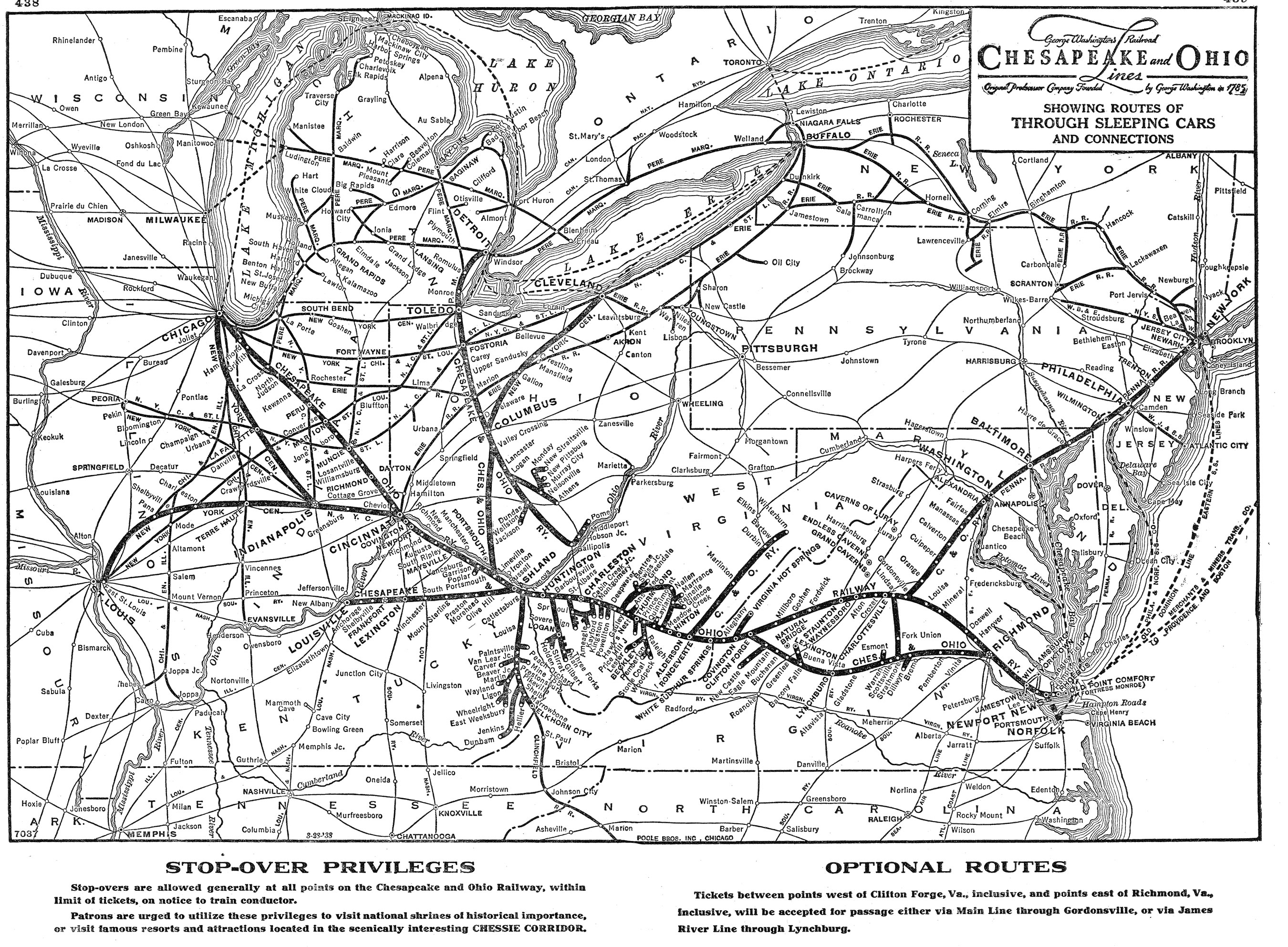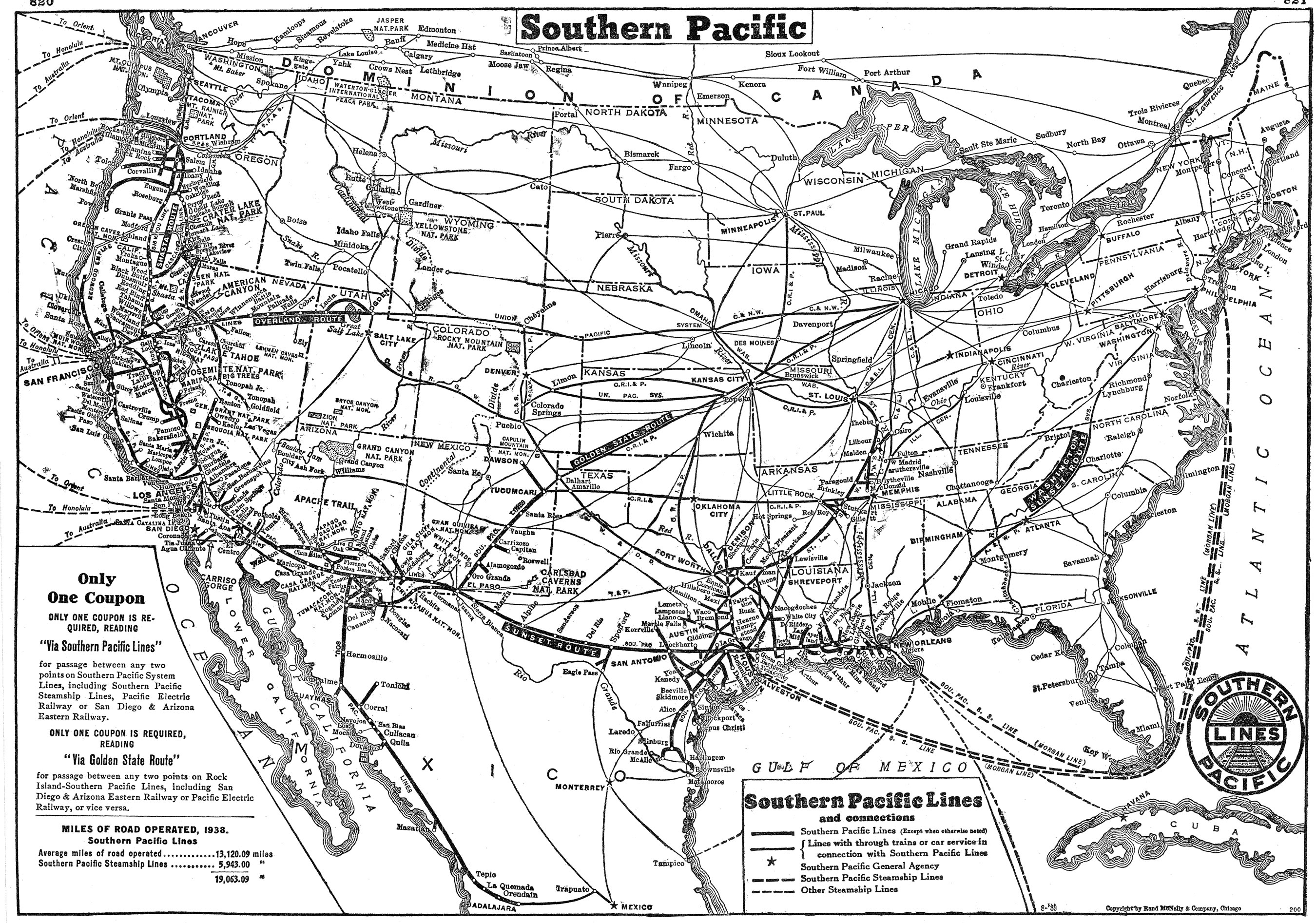Collis P. Huntington and the "Big Four"
Last revised: March 4, 2024
By: Adam Burns
Collis P. Huntington was one of the "Big Four" that would help build the
transcontinental railroad. Like several of the now famous tycoons
Huntington came from a rather modest family and upbringing and he
actually did not become involved with the railroad industry until he was
almost 40.
A merchant and general businessman for years, once Huntington entered the railroad industry he became highly successful.
He would not only complete the Central Pacific as part of the transcontinental railroad but also helped lay the foundation of the Chesapeake & Ohio Railway and the Southern Pacific.
Quite the visionary, virtually all of the major through routes Huntington helped establish are still important arteries today under names like CSX Transportation and Union Pacific.
Early Life
Collis Potter Huntington was an iconic figure who left a lasting imprint on the railroad industry in the United States.
Born on October 22, 1821, in Harwinton, Connecticut, Huntington displayed a keen interest in trade and entrepreneurship during his early years. The eldest of nine siblings, he took the responsibility of supporting his family at only sixteen after the collapse of his father's businesses.
His parents always struggled to make ends meet and with the local community concluding that the eight children were not being well cared for financially Huntington and his brother Solon went to live with a neighbor.
Spending so much time together in their youth would deeply affect the brothers' relationship. In later years they would operate a number of successful business partnerships together before Collis became involved in the railroad industry.
Prior to his railroad ventures, Huntington invested in a variety of businesses including a shipping and general merchandise store in Sacramento during the Gold Rush. Although successful, this pales in comparison to the mark he made as a railroad tycoon.
At the age of 14 Huntington took an apprenticeship and later went to work for business owners Phineas Noble and Daniel Curtiss. Impressed with his managerial and business skills, Huntington was able to get a loan in New York via Noble's and Curtiss' letters of recommendation.
From there he setup a small horse cart merchant stand at only the age of 16. In 1842 Huntington went to work for his brother's store in Oneonta, New York and two years later they established a partnership.
Huntington's early business ventures were successful although only modestly and nothing which resulted in phenomenal wealth. That all began to change, however, with the California Gold Rush of 1849.
California Gold Rush
Still partnered with his brother it was decided Huntington would travel to California in an attempt to cash in on the gold fever hitting the state by establishing another mercantile business there. In August 1849 he arrived in San Francisco and headed south to Sacramento.
Attempting to do business in the far west in the mid-19th century was not easy. However, Huntington prevailed and added additional business partners Dan Hammond and Edward Schultz. It was the presidential election of 1855 where Huntington became interested in the railroad industry.
Talk of forming a transcontinental line was growing and supported by republican nominee John Charles Fremont. While Huntington supported Fremont, he would not achieve the nomination. However, public support was rapidly growing for railroads, particularly in the west where there were few.
Central Pacific
Sacramento gained its first railroad in 1856 and with Abraham Lincoln winning the presidential nomination of 1860 the Central Pacific Railroad, established in 1861, ratified the Pacific Railroad Act of 1862 to work in completing the country's first Transcontinental Railroad.
The other railroad to be born through this act was the Union Pacific and together they would come to build the transcontinental railroad. It was Huntington, Leland Stanford, Mark Hopkins, Theodore Judah, and Charles Crocker who agreed to mutually help finance the CP although Judah was bought out by what would become the "Big Four" (Crocker, Stanford, Hopkins, and Huntington).
Personal Life
Moving onto his personal life, Collis first tied the knot with Elizabeth Stoddard in 1844, a union that lasted until her demise in 1883. Their only child, Clara Huntington, was adopted by the couple in 1882. Following Elizabeth’s death, he remarried in 1884 to Arabella Duval, a widow and longtime family friend.
At A Glance
William Huntington (father) Elizabeth Vincent (mother) | |
Central Pacific Southern Pacific Chesapeake & Ohio Railway |
With the building of the CP also subsidized through the federal government (being given land grants as well as loans) it was Huntington who became the principal leader of the group working with Congress to see that the railroad got whatever it needed.
While building the CP took much longer and cost much more than originally envisioned it was completed on May 10, 1869 at Promontory, Utah and linking with the Union Pacific system.
Four years prior to this milestone the Southern Pacific had been established to connect San Francisco and San Diego, California. In September 1868, Collis P. Huntington and the rest of the "Big Four" bought out the original founders of the SP and would combine the operations of the Central Pacific by 1870.
Southern Pacific
By the late 1870s the railroad was sprawling out across Southern California and served the state's largest markets including its line through the Southwest, which reached El Paso, Texas by the early 1880s.
Throughout the rest of the 19th century the Espee continued to spread throughout the West and Southwest, reaching northern Oregon and serving most of that state's largest cities by the late 1880s.
By the 20th century the railroad continued to expand and was by this time well entrenched into the Southeastern markets of New Orleans and the Gulf Coast (it also leased the CP in the 1920s, eventually merging the railroad into its system with its main line becoming the Overland Route).
By mid-century it owned a stunning 15,000 miles of track, stretching from the warm and sunny beaches of Southern California and Gulf of Mexico to the deserts of Arizona and mountains of the Sierra Range.
Huntington's interest in southern Virginia as having the potential to becoming a major port dates all of the back to his teenage at 16. He had visited what was then Newport News Point during his traveling salesman days and recognized the strategic value of the James River emptying into the lower Chesapeake Bay.
Other Railroads
In 1869 he was convinced by Chesapeake & Ohio president Williams Wickham to take over construction and operation of the railroad. The Chesapeake and Ohio Railway had its beginnings in the mid-1830s when the Louisa Railroad was chartered to connect Virginia's larger cities.
In 1850 the company was renamed the Virginia Central because it operated through much of the state's central regions, west and north of Richmond.
By 1867 the railroad was again reorganized, this time as the Chesapeake & Ohio Railroad when Virginia Central management decided to push the railroad to the Ohio River, eventually reaching Huntington, West Virginia during the winter of 1873 after building a main line through the Alleghenies and the tight confines of the Kanawha River valley.
It was Huntington who saw the growth of Newport News, Hampton Roads, and Norfolk as a major port in the late 19th century originally founded the Newport News Shipbuilding and Drydock Company there.
He also established Huntington, West Virginia in 1871 as a base of operations for the C&O establishing the Ensign Manufacturing Company there a year later. Huntington became a major terminal along the C&O, all of the way through the 20th century and today still remains so on successor CSX's system.
Death
Collis P. Huntington died at the age of 79 in August, 1900 but before his death he helped most of the C&O's original network, such as its extensive reach into West Virginia's southern coal fields.
According to the book, "Civil War America: 1850 To 1875" by Richard F. Selcer, Huntington's net worth was $50 million at the time of his death ($200 million adjusted for inflation) and he had considerable landholdings. Huntington was also somewhat charitable, giving the Metropolitan Museum of Art his massive art collection and also donated his Fifth Avenue mansion to Yale University.
Legacy
His primary estate, the Huntington Mansion in New York City, stood a testament to his vast wealth. His numerous philanthropic efforts, including the establishment of the Huntington Library, reflected his commitment to society's development.
Collis Huntington’s life story is an illustration of ambition, relentless pursuit of wealth, and a keen aptitude for business ventures. He demonstrated an uncanny ability to seize business opportunities, which he did not only in his early retail enterprises but more prominently in his endeavors as a Railroad Baron.
His involvement in the CP Railroad marked the beginning of a remarkable journey that revolutionized the transport industry. This venture's success can be primarily attributed to the "Big Four's" collective efforts, with Huntington's role being pivotal. Unlike his fellow investors, it was he who made the daring trips to Washington D.C. to ensure government support and secure essential loans.
The CP line's construction presented numerous challenges, foremost among which was the daunting Sierra Nevada. Huntington, as a part of the Big Four, devised innovative techniques to tunnel through the mountains, relying significantly on the labor of Chinese immigrants. Despite widespread criticism and adverse conditions, they successfully completed the railroad construction in 1869.
His business acumen did not end with the CP. He found another lucrative opportunity in the Southern Pacific Railroad, further elevating his standing as a railroad magnate. Under his leadership, the SP connected various remote locations in the Southwestern U.S, bringing economic growth and helping establish new settlements.
Huntington’s championing of the Chesapeake & Ohio Railway served as yet another evidence of his remarkable foresight. He was the driving force behind its expansion, ultimately connecting Virginia with Ohio. This strategic initiative created significant economic prosperity for the regions it served, and further solidified his reputation as a visionary railroad entrepreneur.
Despite his entrepreneurial triumphs, Huntington's life was not without controversy. His business methods were often questioned, and he was known to have intense rivalries with fellow businessmen. His reputation suffered from accusations of underhand dealings, particularly in regard to his railroad investments.
Nonetheless, the wealth he amassed from his railroad ventures was immense. His extensive holdings and investments in various railroads across the country contributed significantly to his fortune. His lifestyle was reminiscent of the opulence of the Gilded Age, with magnificent estates and lavish possessions.
Huntington's legacy, however, cannot be solely measured by his wealth. More visible are his numerous contributions to society. As a devoted philanthropist, he donated generously to various causes. The most remarkable of which is the Huntington Library, Art Museum, and Botanical Gardens, which continues to serve as a cultural and educational resource.
In conclusion, the life of Collis P. Huntington serves as a compelling narrative that intersects with the fundamental transformation of America during the latter part of the nineteenth century.
Be it the gold rush, the civil war, the industrial revolution, or westward expansion, his life and endeavors mark key aspects of the American saga. Irrespective of the controversies surrounding his life, his contributions to the railroad industry and the growth of the American economy stand unmistakable. His illustrious life truly captures the essence of the American dream.
Contents
SteamLocomotive.com
Wes Barris's SteamLocomotive.com is simply the best web resource on the study of steam locomotives.
It is difficult to truly articulate just how much material can be found at this website.
It is quite staggering and a must visit!



